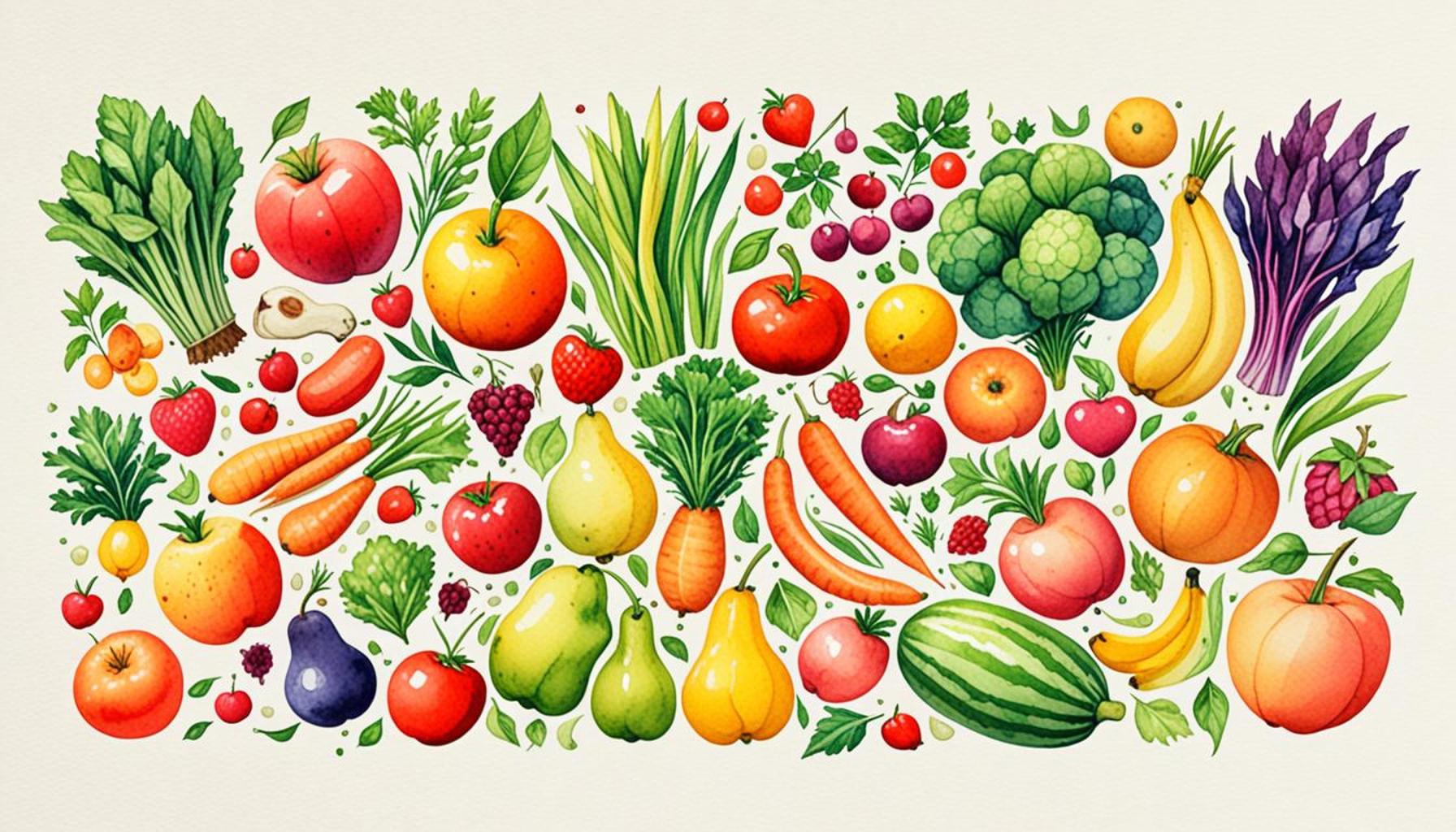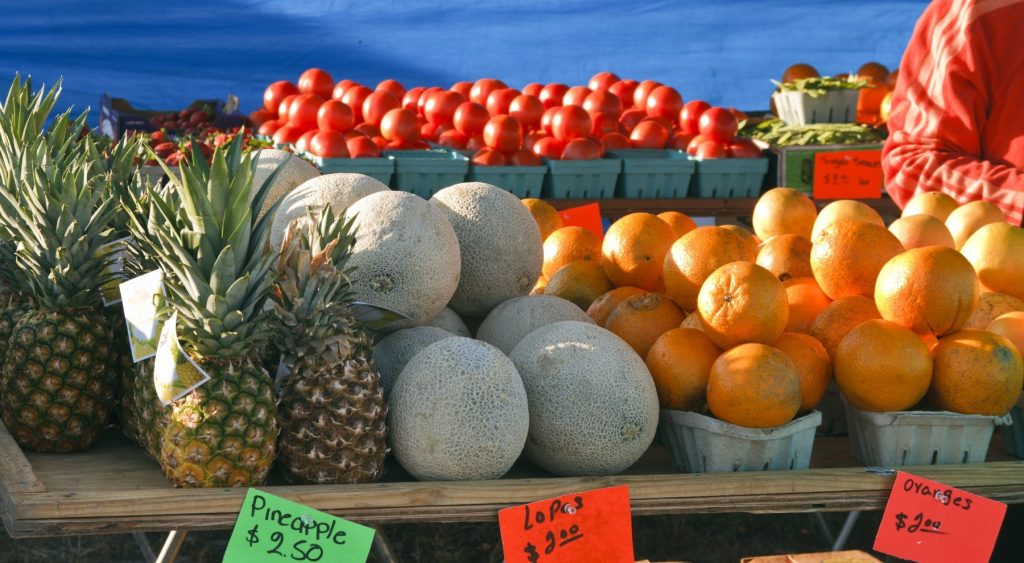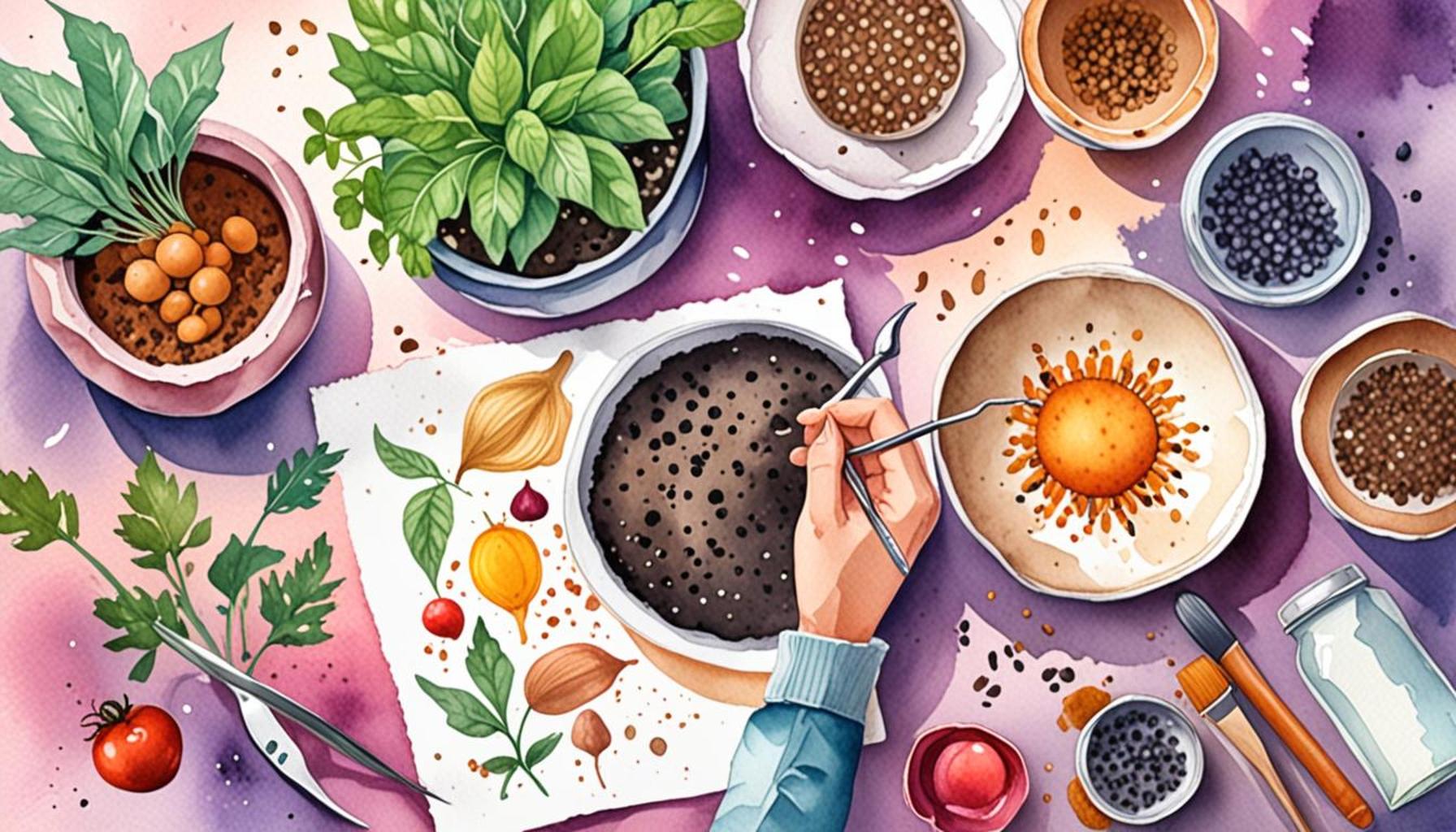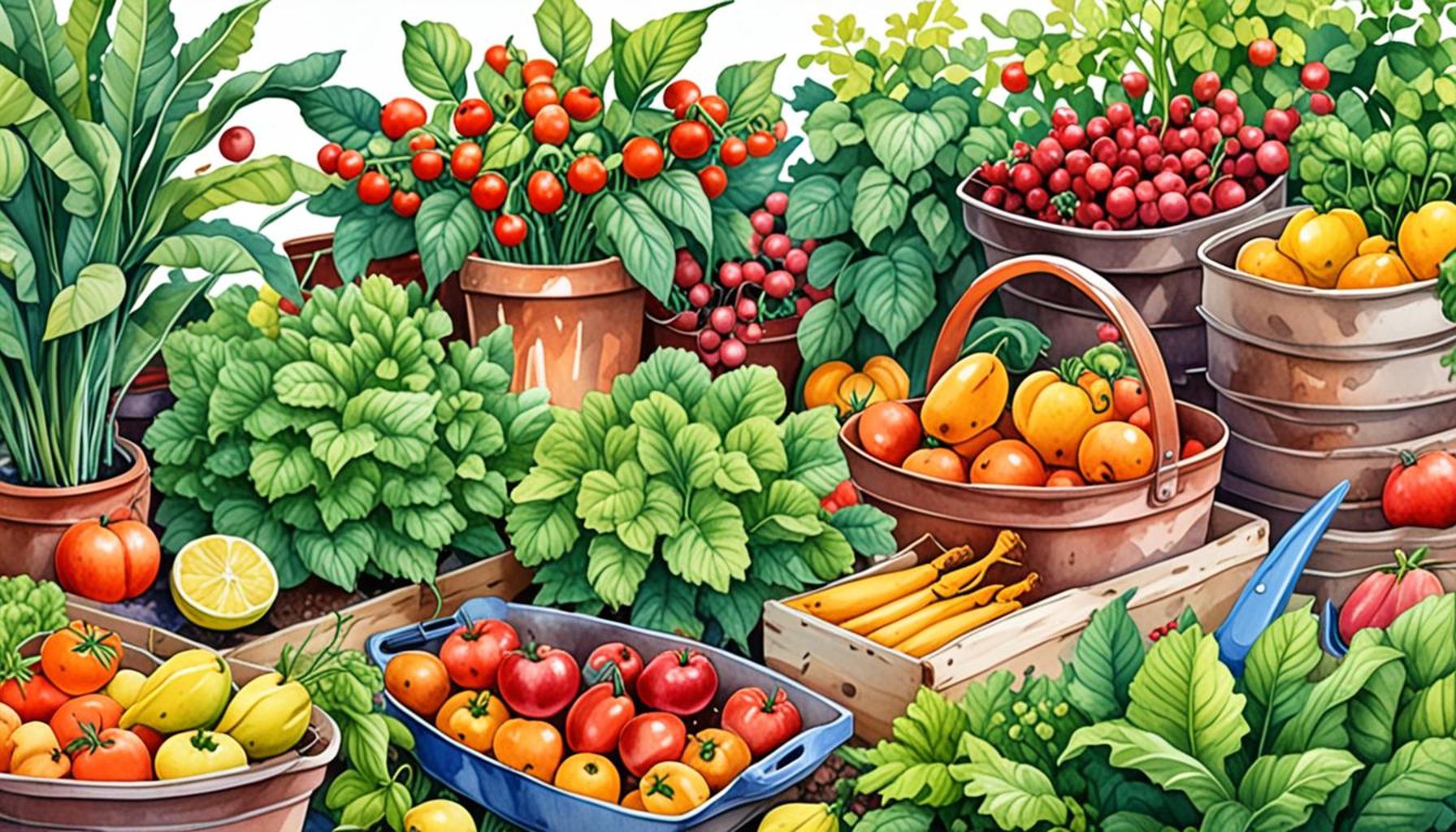The importance of selective harvesting: How to choose the best fruits and vegetables

The Importance of Selective Harvesting in Agriculture
Harvesting plays a pivotal role in agriculture, fundamentally affecting not only the overall yield, but also the quality and taste of the food we consume. One method that stands out in its efficiency and benefits is selective harvesting, an approach that focuses on gathering only the ripest and healthiest produce. This practice not only enhances our dining experience but also contributes positively to nutritional value and reduces food waste.
The advantages of selective harvesting are manifold, making it an essential practice for both commercial farmers and home gardeners alike. For starters, selective harvesting leads to enhanced flavor; fruits and vegetables picked at their peak ripeness are bursting with taste, offering a delightful contrast to their under-ripe or overripe counterparts. For example, a sun-ripened tomato has a juicy, sweet profile, whereas an unripe one may be bland and lack character.
In addition to flavor, selective harvesting significantly contributes to reduced waste. By carefully picking only what is ready for consumption, farmers and gardeners can minimize spoilage. This is especially crucial in areas where refrigeration is limited or when produce is transported over long distances. For instance, at farmers’ markets across the United States, such as those in California’s Central Valley, vendors often emphasize handpicking their fruits to ensure that only the freshest items are available for purchase, thereby reducing the chance of unsold goods going to waste.
Moreover, selecting ripe produce results in improved nutrition. Freshly picked fruits and vegetables retain more vitamins, minerals, and antioxidants than those that have been stored for extended periods. Nutritional studies often point to the loss of nutrients in food as time passes after harvest. For example, leafy greens like kale and spinach are often at their best—both in flavor and nutrient density—when harvested just as they reach maturity.

In the bustling agricultural landscape of the U.S., especially within local farmers’ markets and grocery chains, consumers are presented with a wide array of fruits and vegetables. From succulent Georgia peaches to sweet Ohio corn, learning how to select the freshest produce can greatly enhance culinary experiences. Knowing when and how to harvest—whether from a backyard garden or a community plot—can turn any kitchen into a haven of healthy, fresh food.
Essential Tips for Selective Harvesting
This article serves as a stepping stone into the nuanced practices of selective harvesting. We will provide essential tips, identify the characteristics to look for when picking produce, and share expert insights on harvesting methods. Each piece of knowledge acquired will not only enrich your understanding but will also foster a more sustainable and enjoyable eating experience. From understanding the subtle differences in color and texture to knowing the right time for harvest, these practices embody a commitment to quality and nutrition in our diets.
DISCOVER MORE: Click here for insights on proper harvesting
Mastering the Art of Selective Harvesting
Selective harvesting is not merely an agricultural technique; it is an art form that requires knowledge, intuition, and a keen eye for detail. The effectiveness of this method hinges on understanding the specific signs of ripeness and quality among different fruits and vegetables. This knowledge empowers farmers and home gardeners alike to make informed choices about when to reap their harvest, leading to superior freshness and overall quality on our plates.
One of the first steps in mastering selective harvesting is recognizing the nuances of fruit and vegetable maturity. Produce does not ripen uniformly, and different varieties have unique indicators of readiness. Here are some key signs to look for:
- Color: Observe the color changes of your fruits and vegetables. A ripe bell pepper transforms from green to bright red or yellow, depending on the variety, while a ripe avocado should yield slightly when pressed.
- Texture: The texture can also indicate ripeness. For instance, a ripe peach will feel soft yet firm under gentle pressure, while a fully ripe cucumber should have a slight sheen and be crisp to the touch.
- Size: Size matters, but it is essential to consider it in conjunction with other factors. For example, strawberries are best harvested when they are fully formed and bright red, rather than overly large, which can indicate a lack of flavor.
- Aroma: Many fruits emit a sweet scent when they are ripe. A fragrant cantaloupe or a strong-smelling pineapple is usually a good sign that the fruit is ready for harvesting.
Being mindful of these indicators not only elevates the harvest quality but also offers an opportunity for engaging with local agricultural practices. In many regions across the United States, farmers share their expertise through workshops and community happy hours, creating an interactive environment where enthusiasts can learn firsthand the principles of harvesting. Understanding these characteristics fosters a deeper appreciation for seasonal produce while connecting people to their food sources.
The cultivation of selective harvesting habits can also yield impressive benefits for gardens of all sizes. As home gardeners adopt these principles, they foster a sustainable relationship with their environment. For instance, by allowing some crops to mature while selectively harvesting the rest, gardeners can enable a staggered harvest that prolongs the harvest season and minimizes waste. Techniques such as succession planting, whereby new plants are sown at intervals, further enhance this strategy by ensuring continuous production.
Finally, integrating local knowledge and personal experience into selective harvesting practices can contribute to a thriving community. For example, community-supported agriculture (CSA) programs encourage relationships between local farmers and consumers, helping people to understand the benefits of choosing in-season produce and picking methods. By supporting these local initiatives, consumers not only gain access to fresher, tastier fruits and vegetables, but they also contribute to a vibrant, resilient food system.
Identifying Quality during Selective Harvesting
As we continue to explore the significance of selective harvesting, we will delve deeper into practical strategies for identifying quality produce and how these techniques can transform not just the way we harvest, but also the way we enjoy our food.
The Importance of Selective Harvesting
One of the most compelling aspects of selective harvesting is its profound impact on crop quality. By focusing on the selection of fully ripened fruits and vegetables, farmers not only enhance the taste and nutritional value of their produce, but they also ensure that their harvest meets market standards. Selective harvesting allows for the collection of fruits when they are at their peak, maximizing their flavor profile. This attention to detail translates into better products for consumers, making it essential for anyone interested in cultivating a healthy diet based on high-quality produce.Another important consideration in selective harvesting is sustainability. Employing this method helps reduce waste, as only the best fruits and vegetables are picked, leaving unripe or damaged produce in the fields. This practice not only conserves resources but also supports the ecosystem by promoting healthy fruit and vegetable trees. As a result, selective harvesting contributes to earth-friendly agricultural practices, an important factor for conscious consumers who prefer to support sustainable farming.Moreover, selective harvesting can also lead to increased profits for farmers. By selling only the highest-quality products, they can often command higher prices in the market. It creates a significant incentive for farmers to adopt more labor-intensive harvesting techniques, which yield better crops with enhanced flavor and nutritional content. Consequently, consumers benefit from tastier choices, while farmers improve their profit margins.As one delves deeper into the practices of selective harvesting, it’s important to recognize the techniques available to choose the best fruits and vegetables. Factors such as texture, aroma, color, and even slight variations in the ripeness of fruits can signal when to harvest. Understanding these nuances not only educates the consumer but also empowers them to make informed decisions at the market.Finally, selective harvesting is not just an agricultural practice; it is a choice that resonates with those who value quality over quantity. By understanding how to select the best produce, consumers can enhance their meals, support sustainable agriculture, and enjoy a wide array of flavors throughout the growing season. The journey doesn’t just end at purchase; it enables an ongoing connection to the origins of our food, fostering a deeper appreciation for the effort that goes into cultivating the fruits and vegetables we consume daily.
DISCOVER MORE: Click here to learn about choosing the right soil for your garden
Strategies for Selecting the Best Produce
When it comes to selective harvesting, developing effective strategies for assessing quality can significantly enhance your experience, whether you’re a seasoned gardener or a casual shopper at the local farmer’s market. Let’s explore some fundamental practices that can help you identify the best fruits and vegetables.
First, understanding the specific growing conditions of each fruit and vegetable is vital. Different crops flourish under various environmental influences, including soil type, climate, and irrigation methods. For instance, heirloom tomatoes are renowned for their rich flavor but require careful attention to temperature and sunlight for optimal ripeness. Observing these relationships—like how a cooler summer may delay harvest times—can guide you in determining when produce will be at its peak.
Consider also the seasonality of produce. Knowing which fruits and vegetables are in season can not only improve freshness and flavor but can also make your selection process easier. In the United States, seasonal charts are readily available to help you anticipate when your favorites will be at their best. For example, late spring is ideal for tender greens and early summer heralds sweet strawberries, while fall brings hearty squash and crispy apples. Aligning your harvesting and purchasing with these natural rhythms can significantly enhance the quality of your yield.
Visual inspection is perhaps one of the most immediate and approachable techniques for selecting high-quality produce. For fruits like avocados and pears, the color and firmness indicate maturity, but it is equally important to check for surface blemishes or damage that may compromise quality. For leafy greens, always pick those that are vibrant and crisp, avoiding any that appear wilting or discolored.
Another critical factor in selective harvesting is the timing of your harvest. Gathering produce at the right moment ensures the best taste and nutritional content. Research indicates that fruits and vegetables often experience a peak in flavor just before full ripeness. For example, asparagus should be harvested when spears are about 6-8 inches tall, as waiting too long can make them tough and woody. Knowing these ideal timelines can drastically affect the quality of your harvest.
Moreover, understanding the role of post-harvest handling is essential in preserving the quality of freshly picked produce. Once harvested, proper storage conditions can prevent spoilage and maintain flavor. For instance, many leafy greens, such as kale and spinach, thrive in cold temperatures and should be refrigerated immediately to sustain their crispness. In contrast, tomatoes prefer a slightly warmer environment, so storing them at room temperature can help retain their natural sugars and flavor profile.
Lastly, engaging with your local agricultural community plays an important role in refining your selective harvesting skills. Seeking guidance from local farmers, attending workshops focused on sustainable practices, and exploring community gardens can provide hands-on experience and insights that significantly enhance your understanding of quality produce selection. Additionally, many local growers will be eager to share their tips, techniques, and favorite varieties, creating a richer food culture and, ultimately, a more fulfilling harvesting experience.
The Future of Selective Harvesting
As we navigate the complexities of modern agriculture and food consumption, the importance of selective harvesting emerges as a powerful ally in promoting sustainable practices, better food quality, and enhanced flavors. By honing our skills in selecting the best fruits and vegetables, we can contribute not only to our own health and well-being but also to the vitality of our communities and ecosystems.
DISCOVER MORE: Click here for essential soil tips
Conclusion: Embracing Selective Harvesting for Better Produce
In a world where the quality of food increasingly affects our health and the environment, selective harvesting stands out as a critical practice that can enhance both our culinary experiences and our impact on the agricultural ecosystem. By applying the strategies discussed, from understanding specific growing conditions to engaging with local farmers, individuals can develop a deeper appreciation for the fruits and vegetables they consume.
Recognizing the significance of seasonality not only connects us to the rhythms of nature but also ensures that we are enjoying produce at its peak flavor and nutritional value. Through careful visual inspections and mastery of the ideal timing for harvest, we can maximize the quality of what we bring to our tables. This attention to detail not only promotes healthier choices for ourselves but also supports sustainable practices that benefit the broader community.
As the movement towards local farming and backyard gardens gains momentum, the role of selective harvesting becomes even more essential. By elevating our knowledge in choosing the best fruits and vegetables, we contribute to a more vibrant food culture, fostering relationships with growers and embracing the flavors that true quality provides. Therefore, whether you are navigating your local market or tending to your garden, remember that each decision made during the harvesting process shapes not only your meal but the health of our communities and the environment. Let us commit to the art of selective harvesting, ensuring that every bite brings the taste of the best that nature has to offer.


